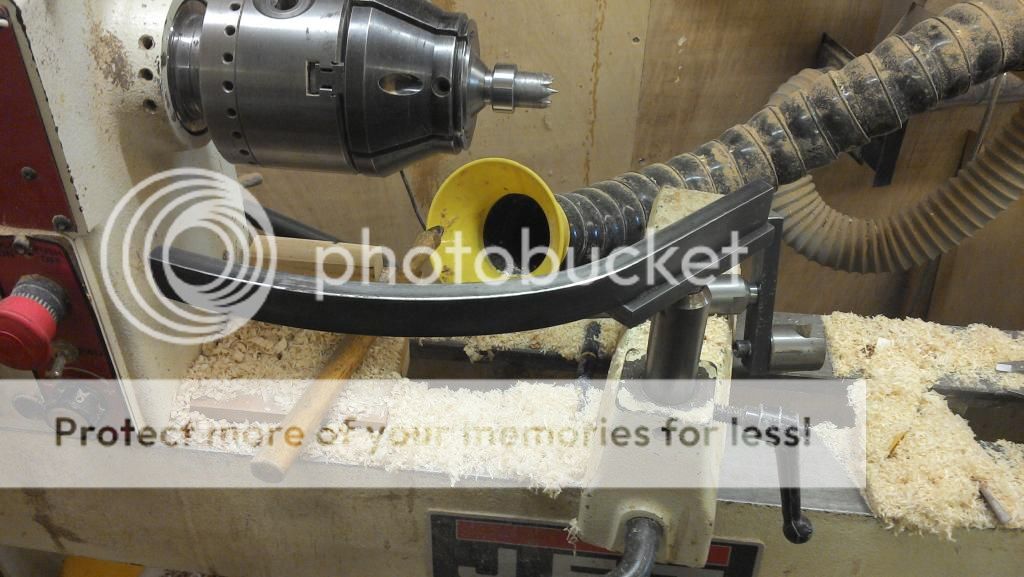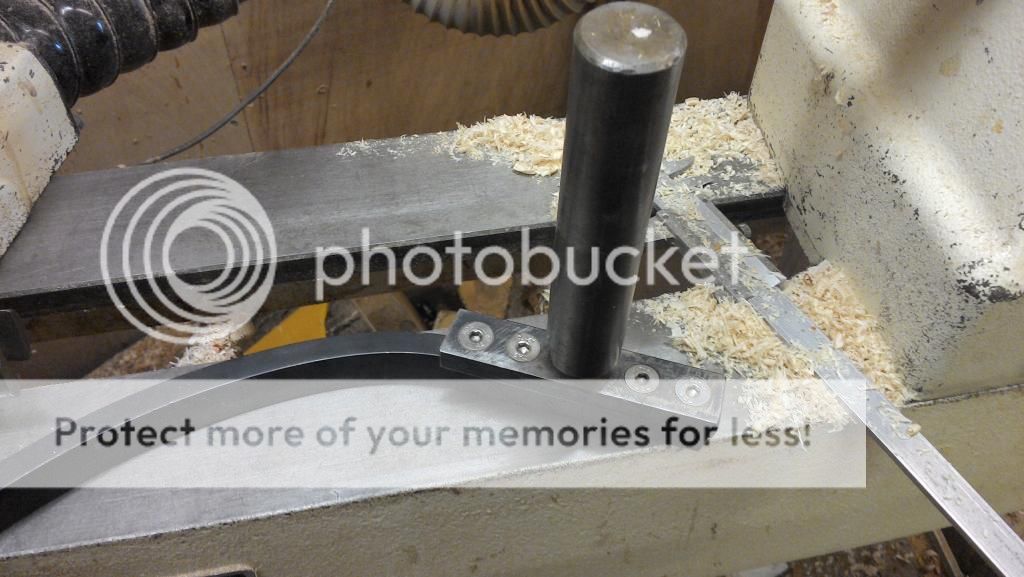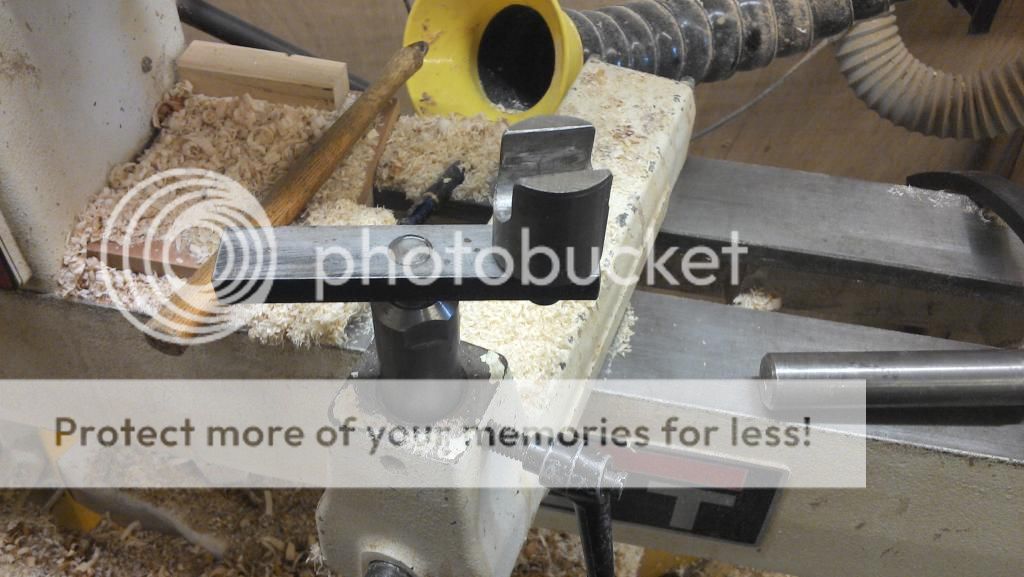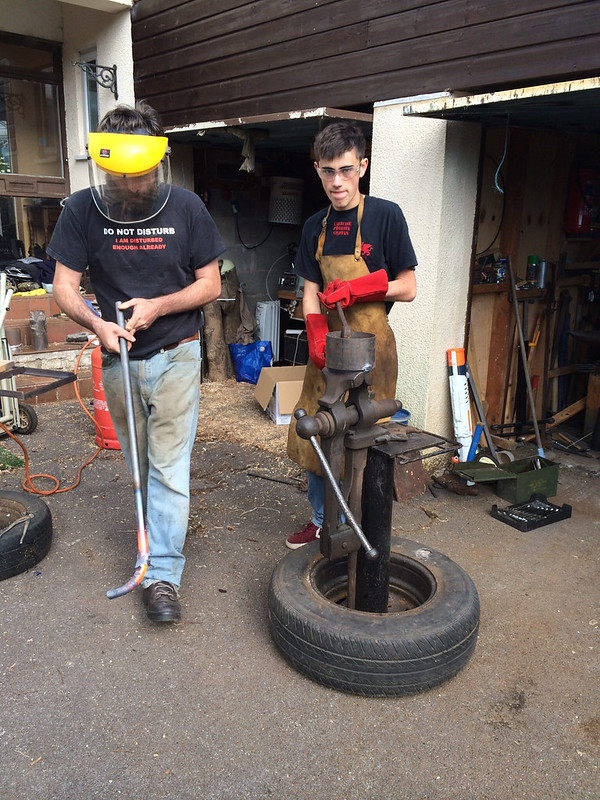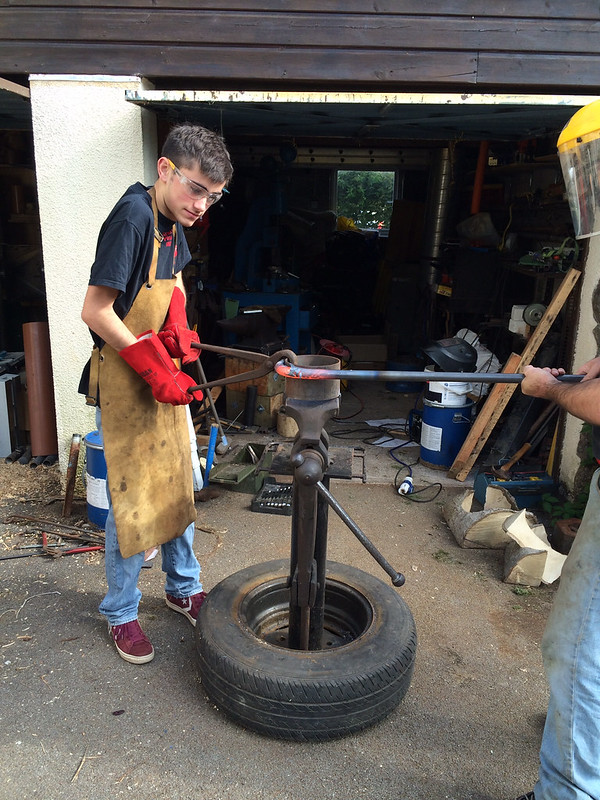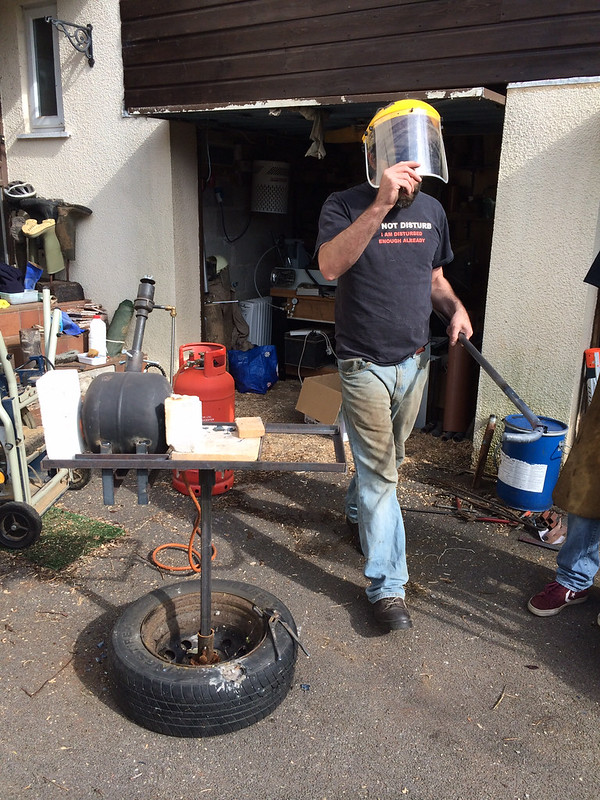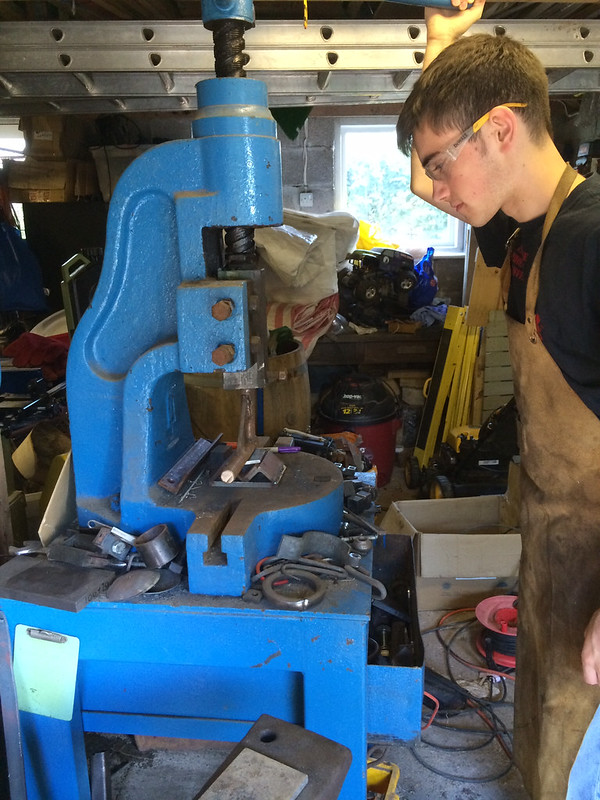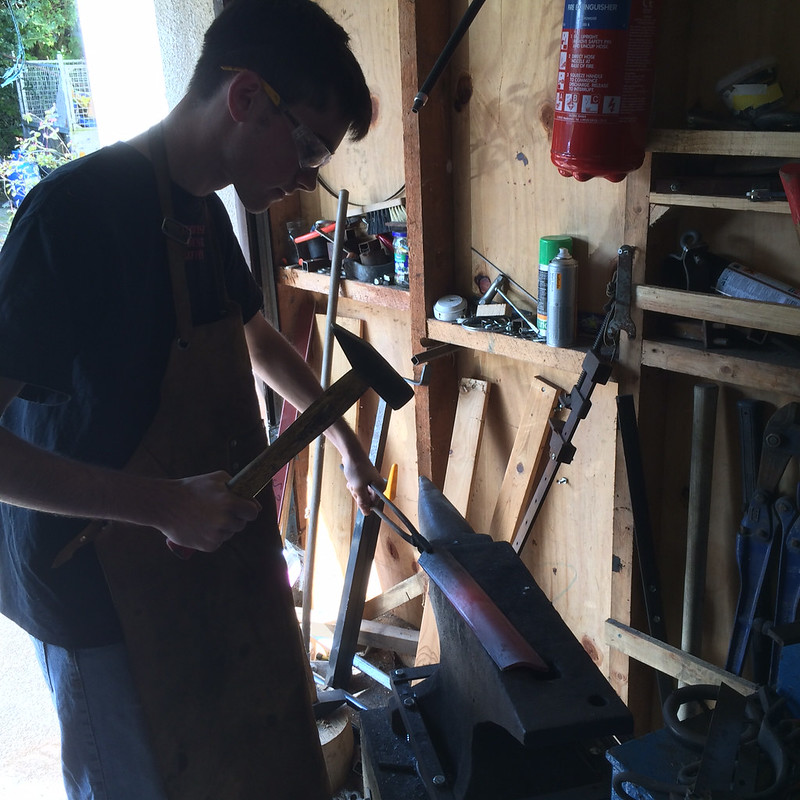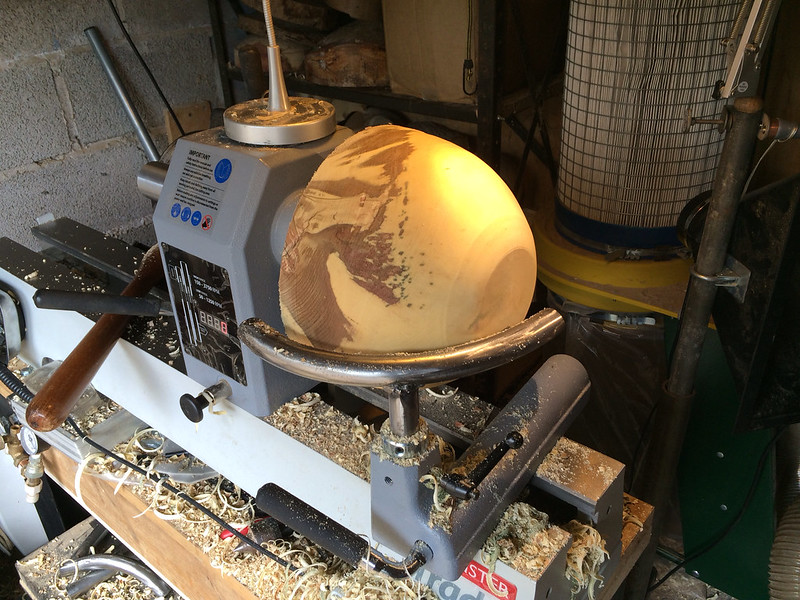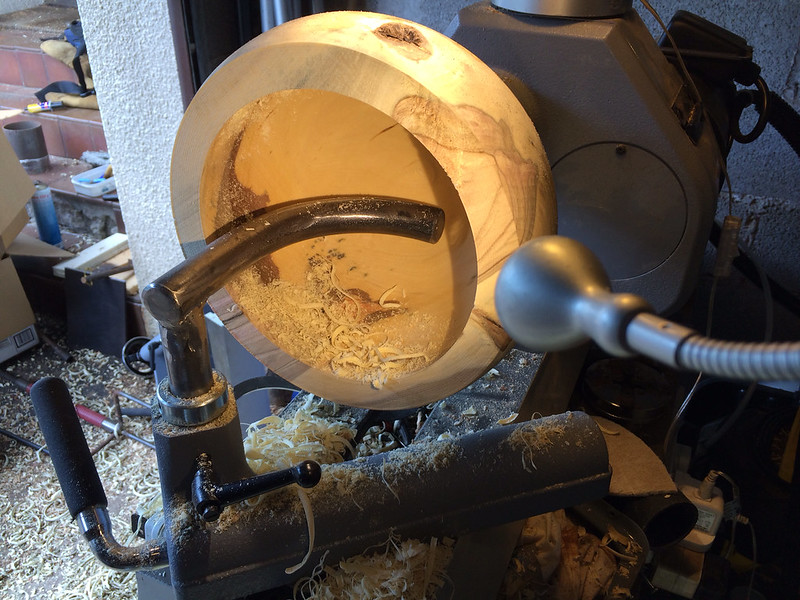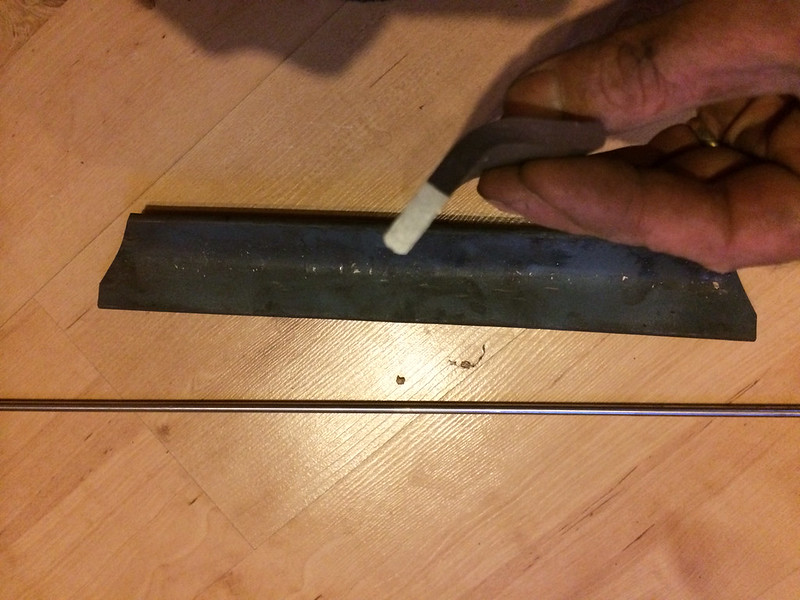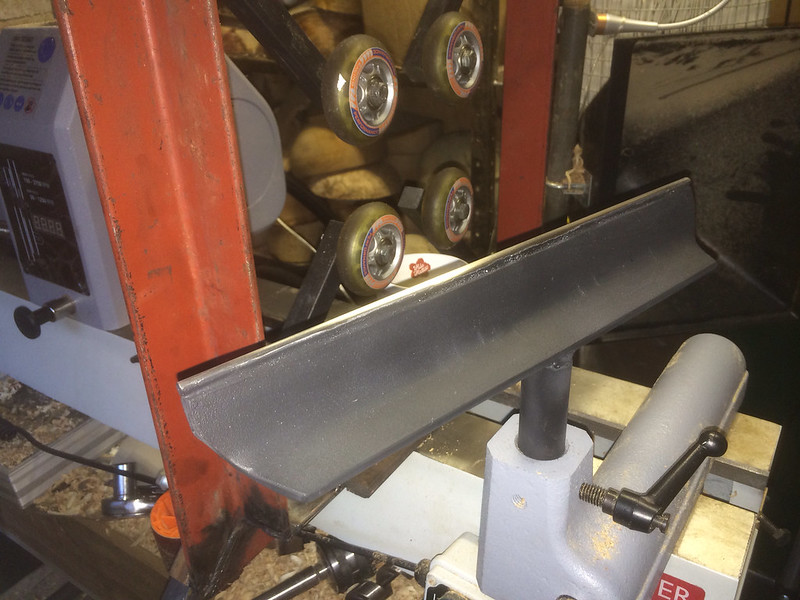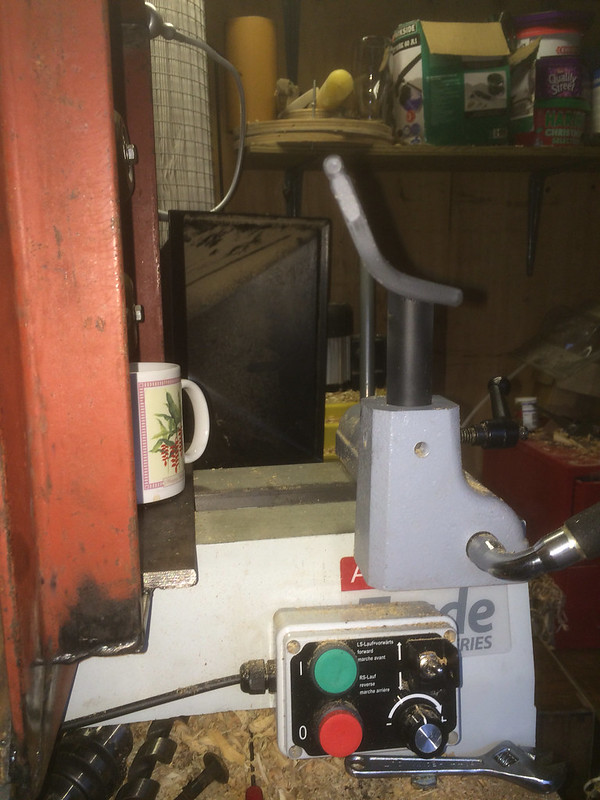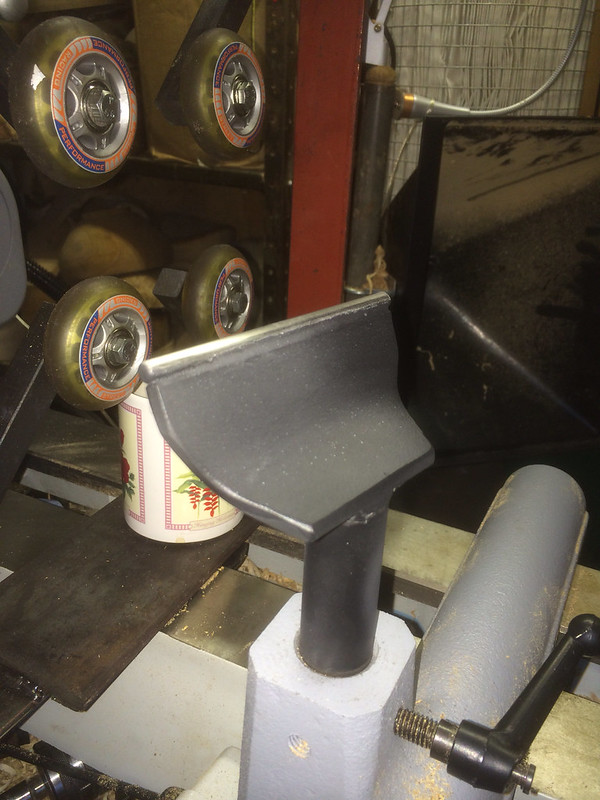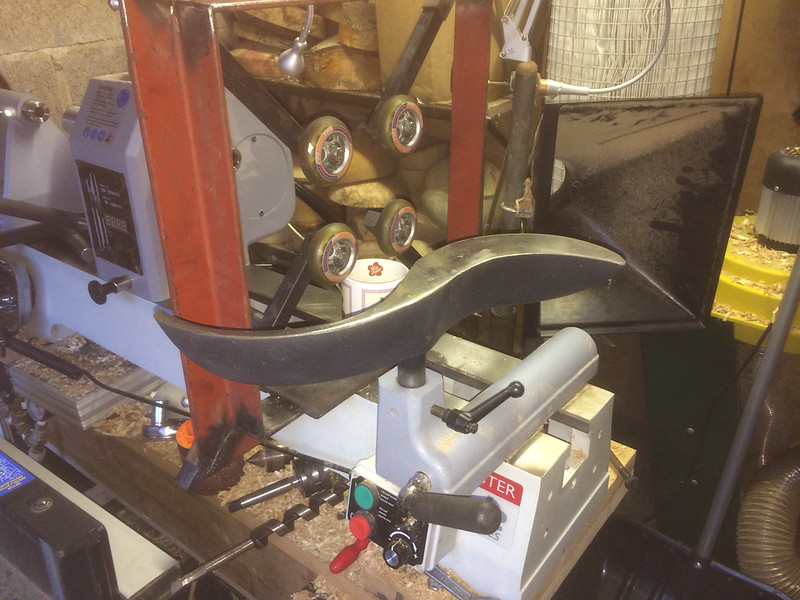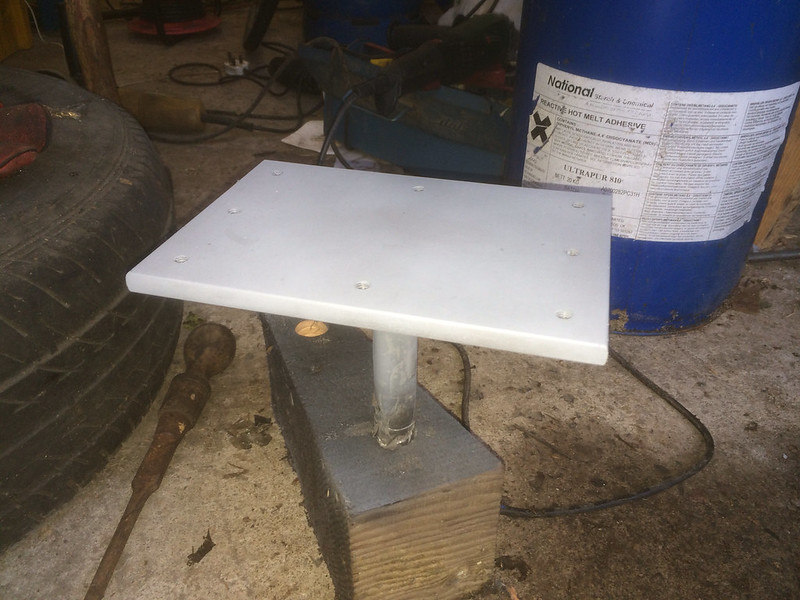bogmonster
Established Member
I am planning on making up some tool rests. I have seen a few previous posts both here and elsewhere but just wanted to get some additional input. I might try some round rests similar to the Sorby offerings. First question is do I make hardened rests or will mild steel do? My gut feeling is that as these will mostly be used with bowl gouges with nice curved shafts, mild steel will probably last quite well. Hardened rests are problematic as the only real option is either a one piece construction or a mechanical joint between the stem and the rest (welding heat treated steel will just temper it to the point that you may not have bothered - hardening afterwards will probably fracture or severely weaken the weld). Sorby gets around this with a threaded assembly. I don't have a metal lathe but a friend can turn shoulders on stems for me to cut threads with a die. However, I am rally not convinced this is not overkill? If I go with mild steel I can just stick weld the stem to the rest - my welding ain't pretty but stick welding can be mighty strong.
So, I think I have probably decided on mild steel... The next question is what diameter? The stem is 1" and I am tempted to go for 1" rests as well. These will result in more of a gap between the fulcrum and the cutting edge but I think I would rather that with a heavier rest - any thoughts? Out of curiosity, anybody know what diameter the Sorby rests are, I am thinking 3/4"? Even bending the radius in 1" steel will be a challenge (without marring the surface with lots of tool marks) but I think a flypress, jig and forge should get the job done. 3/4" would be much easier to bend...
Another issue with 1" might be the amount of profile deforming when making a curved rest. Might just need to experiment with that - kind of depends on the radius of the curve.
Anybody tried this? What has your experience been?
I have already salvaged the cast bowl rest off my old lathe. This is a really great rest and it has a separate steel stem mounted in a hole that is mighty close to 1" , just need a bit of fettling to get a fit. There is also a really nice heavy steel rest with a 30mm fixed stem. Thinking about how I can get that down to a 1" stem.
Of course I could just buy something. I do wonder with the Sorby set, does the stem not come undone while in use? Sure, most of the force is downwards but not all. Also, I am not that keen on the price if I can make something equally functional for a fraction of the cost.
BM
So, I think I have probably decided on mild steel... The next question is what diameter? The stem is 1" and I am tempted to go for 1" rests as well. These will result in more of a gap between the fulcrum and the cutting edge but I think I would rather that with a heavier rest - any thoughts? Out of curiosity, anybody know what diameter the Sorby rests are, I am thinking 3/4"? Even bending the radius in 1" steel will be a challenge (without marring the surface with lots of tool marks) but I think a flypress, jig and forge should get the job done. 3/4" would be much easier to bend...
Another issue with 1" might be the amount of profile deforming when making a curved rest. Might just need to experiment with that - kind of depends on the radius of the curve.
Anybody tried this? What has your experience been?
I have already salvaged the cast bowl rest off my old lathe. This is a really great rest and it has a separate steel stem mounted in a hole that is mighty close to 1" , just need a bit of fettling to get a fit. There is also a really nice heavy steel rest with a 30mm fixed stem. Thinking about how I can get that down to a 1" stem.
Of course I could just buy something. I do wonder with the Sorby set, does the stem not come undone while in use? Sure, most of the force is downwards but not all. Also, I am not that keen on the price if I can make something equally functional for a fraction of the cost.
BM


































